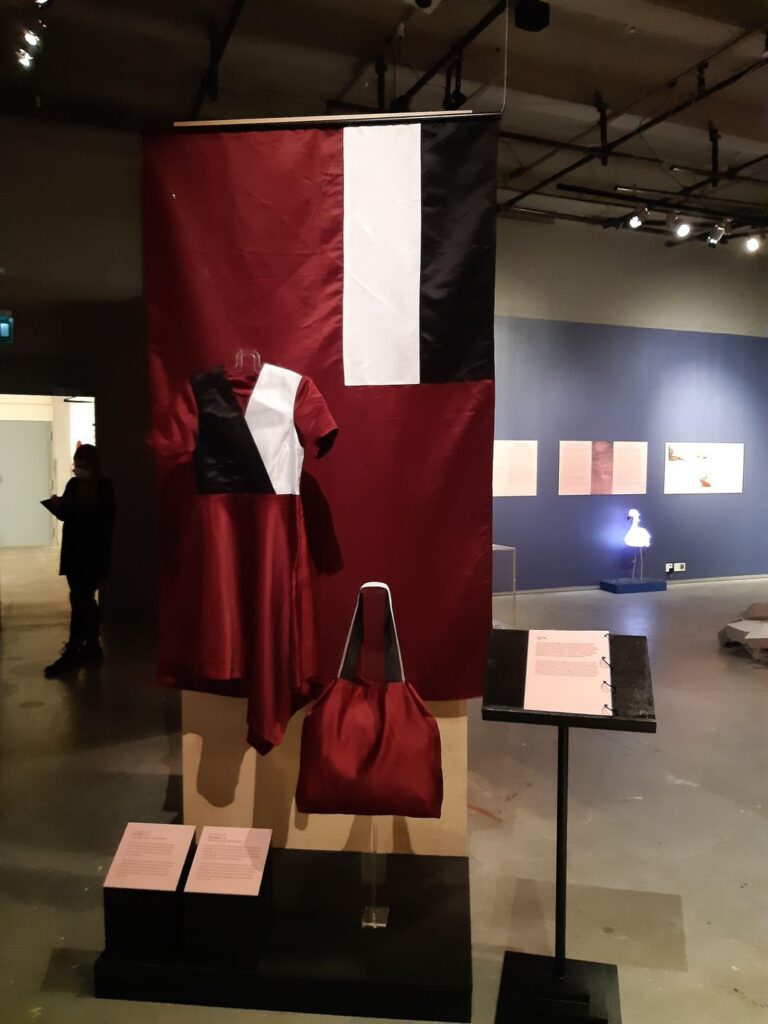What is textile telling us about different eras, personal memories, and social transformation? You can find answers to this seemingly easy – yet extremely complicated – question if you explore the current exhibition in the Finnish Labour Museum Werstas in Tampere, Finland.
Of special attention is Thoma Sukhashvili and Maia Sukhashvili’s joint work “Tailor”, which is a direct and intense transformation of a personal story into a collective history through textile. By focusing on the chaotic, hard reality of Georgia in the 1990s, this artwork presents Thoma’s family story and his mother’s handmade objects in a new context: “The work shows how the flag, the independent country’s national symbol transforms into a functional dress, and afterward – into a bag. The tailor (Maia Sukhashvili) used this bag to take the products to the market, in order to support her family. In this case, the textile is not an art object in itself, but a real artifact. Presented in the context of an installation, it makes us critically think about the difficulties of living in Georgia in the 90s.”
Mariam Shergelashvili offers a wonderful overview of this artwork in a recently published blog,* placing the discussion in the broader context of contemporary art and the practice of creating stories through fabrics. She writes that “textile stories’ also make a certain kaleidoscope of time, where the personal approach becomes an important part of collective memory.”

*The text is an adapted version of a lecture made in the framework of the online program “What Is Textile Telling Us?”. The program is implemented by the State Silk Museum through a grant from CEC ArtsLink’s Art Prospect program.
